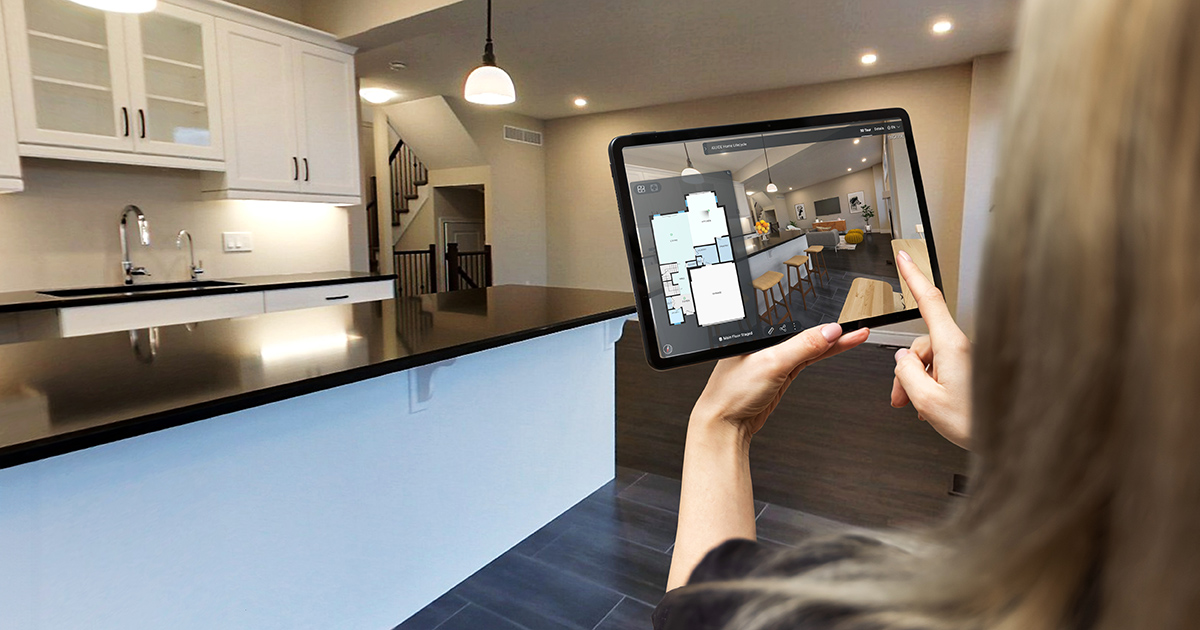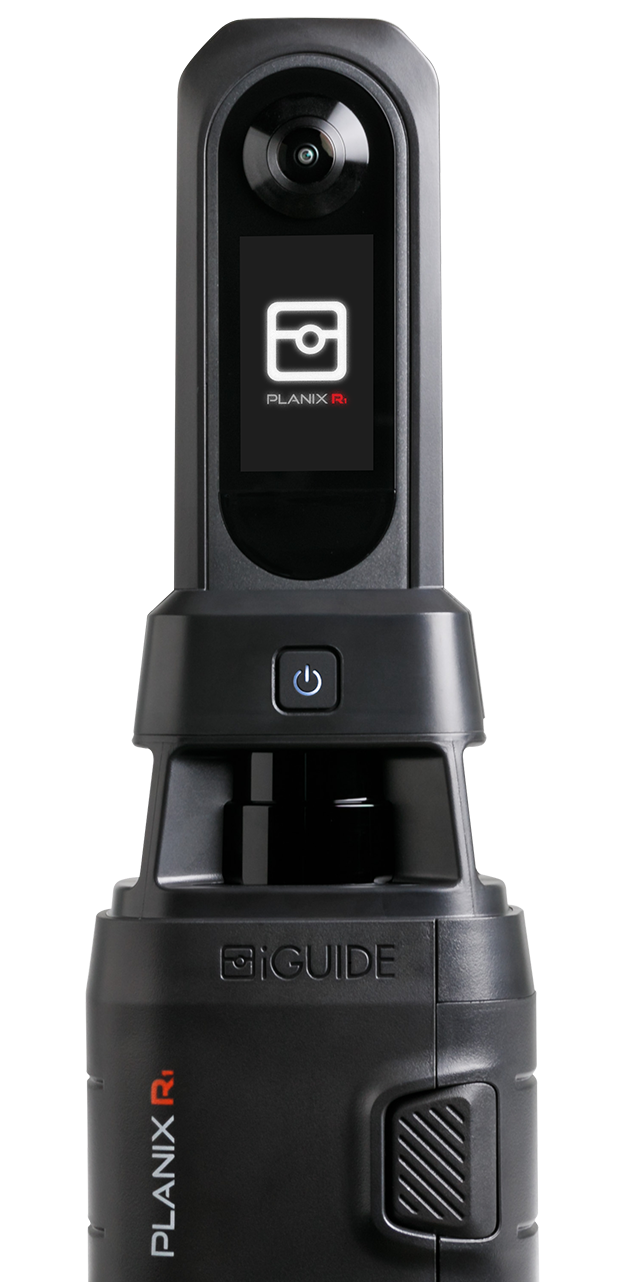iGUIDE offers a smart solution for transforming spaces without the need for physical furniture. We'll guide you through the best staging techniques for multi-family units, ensuring you make the most impact in the competitive real estate market.
Understanding the importance of staging
A well-staged unit not only captures attention but also creates a lasting impression on potential buyers or renters. Let’s dive into why staging is essential and how it can significantly impact the real estate process.
First impressions matter
Imagine walking into a dimly lit, cluttered apartment. Now, picture entering a bright, clean and stylishly furnished unit. Which one would you prefer? The same principle applies to potential buyers or renters. A first impression is formed within the first few minutes of seeing a property.
A well-staged unit can captivate attention, making it easier for people to envision themselves living there. By highlighting the unit's best features and creating a welcoming atmosphere, you can generate more interest and showings. Remember, you never get a second chance to make a first impression.
Increased perceived value
Staging can do wonders when it comes to increasing the perceived value of a multi-family unit. How does this work? When a property is well-staged, it looks more polished and put-together, which can make it appear more valuable than it actually is. Simple touches like clean lines, fresh linens and tasteful decor can go a long way.
There's a psychological aspect at play here as well. When a unit is beautifully staged, buyers or renters are more likely to justify paying a higher price. They see a move-in ready home that reduces their own time and effort in settling in. In other words, staging helps them imagine a more aspirational lifestyle, making the unit more desirable.
Faster sales and rentals
Staging doesn’t just make a unit look good; it gets it off the market faster. Statistics back this up:
- 85% of staged homes sold for 5 to 23% over their listing price.
- Home staging brings in an 8-10% return on investment.
- Renters are more likely to sign a lease quickly when they can visualize living in a staged unit.
In competitive markets, speed is crucial. The quicker a unit is sold or rented, the better it is for everyone involved.
Essential staging techniques
Staging multi-family units is more than just making a place look pretty. The goal is to create a space where potential buyers or renters can see themselves living. This section will cover essential staging techniques that can help turn any multi-family unit from ordinary to extraordinary.
Decluttering and depersonalizing
One of the first steps in staging is to declutter and depersonalize the space. Personal items like family photos, travel souvenirs and kids' artwork can make it hard for potential buyers to imagine the unit as their own.
Decluttering isn't just about hiding stuff; it's about creating a sense of space and openness. Here are some tips:
- Remove personal items: Take down personal photos, memorabilia and anything that screams "someone else lives here".
- Minimize clutter: Clear out closets, cabinets and counters. Less is more.
- Keep it neutral: Opt for minimalist, generic decor that appeals to a broad audience.
Why is this so important? A clutter-free, depersonalized home feels bigger and more welcoming, helping buyers focus on the potential of the space itself.
Furniture arrangement
Arranging furniture effectively can significantly impact how a unit feels. Proper arrangement can create a better flow and make rooms appear larger.
Consider these tips to optimize space:
- Create clear pathways: Ensure there’s a natural flow from one room to another.
- Choose the right size: Use furniture that fits the space. Avoid oversized pieces that crowd the room.
- Define areas: Use rugs to differentiate areas within an open floor plan, like separating the living room from the dining space.
Arranging furniture thoughtfully helps potential buyers see how they can use the space themselves, making it easier for them to envision living there.
Lighting and ambiance
Good lighting can transform a space, making it feel warm and inviting. Dark, poorly lit rooms can be a turn-off for potential renters or buyers.
To enhance lighting:
- Maximize natural light: Open curtains and blinds to let natural light in.
- Use multiple light sources: Combine overhead lighting with floor lamps and table lamps.
- Update fixtures: Modern fixtures can give an outdated room a fresh feel.
Proper lighting not only makes a unit look better but also sets the right mood, making it more appealing to anyone who walks through the door.
Color and decor choices
Color and decor can make or break a staging effort. The right choices can make a space feel modern and stylish, while poor decisions can leave it looking outdated or awkward.
Here are some guidelines:
- Stick to neutral colors: Whites, grays and beiges appeal to most people and can make rooms look larger.
- Add pops of color: Use accessories like throw pillows, rugs and artwork to inject color without overwhelming the space.
- Keep it simple: Avoid overly complex or busy patterns. Simple designs are more universally appealing.
Using neutral tones with strategic accents helps create a balanced and attractive environment that speaks to a wide range of tastes.
By focusing on these essential staging techniques, you can make any multi-family unit stand out in a competitive market. Remember, the goal is to create a space where potential buyers or renters can see themselves.
Using virtual staging with iGUIDE
Virtual staging is revolutionizing how we present multi-family units to potential buyers and renters. Using technology like iGUIDE, you can create stunning, virtually staged rooms without the hassle and cost of physical furniture.
Benefits of virtual staging
Virtual staging offers several advantages over traditional staging that can benefit real estate agents in multiple ways.
- Cost-effective: Traditional staging requires renting furniture, hiring movers, and possibly hiring a staging expert. Virtual staging eliminates these costs, making it much more affordable.
- Flexibility: With virtual staging, you can easily change the design, style or layout of a room. This flexibility is especially useful for showing how a space can be configured in different ways.
- Speed: Virtual staging can be completed in a fraction of the time it takes to physically stage a property. Faster staging means quicker turnaround times, getting your listing live sooner.
- No physical damage: Moving furniture in and out of a unit can cause wear and tear. Virtual staging removes this risk entirely.
- Wide reach: Virtual tours can be shared online easily, allowing potential buyers to view staged units from anywhere, at any time. This is incredibly valuable for attracting out-of-town buyers or renters.
How iGUIDE enhances virtual staging
iGUIDE takes virtual staging to the next level with its unique features, making the process more effective and immersive.
- Accurate measurements: iGUIDE captures precise measurements of each room, ensuring that the virtual furniture fits perfectly. This accuracy helps create a realistic and believable staged environment.
- 3D virtual tours: iGUIDE's 3D virtual tours allow potential buyers to explore every corner of the unit. This immersive experience gives them a better sense of space compared to static photos.
- Interactive floor plans: iGUIDE's interactive floor plans let viewers navigate through the unit easily. They can click on different rooms and view the staged setups, enhancing their overall experience.
- High-quality images: The quality of iGUIDE's images is second to none. High-resolution photos make the virtual staging look as real as possible, capturing the attention of potential buyers.
- Data integration: iGUIDE integrates data like room dimensions and square footage directly into the tour, providing additional valuable information that can help buyers make informed decisions.
Practical tips for staging multi-family units
Staging multi-family units can boost sales and rental rates, helping you close deals faster. Here are some practical tips to make your units stand out.
Know your target market
Understanding your target market is key. The preferences and needs of potential renters or buyers guide your staging choices.
- Young professionals: If your market includes young professionals, think about staging with modern, sleek furniture. They often look for spaces that feel contemporary and hassle-free.
- Families: Families might appreciate a cozy, functional setup. Add elements like a dining table or a play area.
- Retirees: For retirees, comfort is crucial. Opt for inviting, comfortable furniture and serene decor.
Knowing who you’re trying to attract helps you make the right staging choices, making your units more appealing.
Highlight key features
Every unit has its unique selling points. Effective staging draws attention to these features.
- Open floor plans: Use rugs to define spaces. This makes the layout look purposeful and practical.
- Natural light: Open curtains and use light, airy colors to enhance the feeling of openness. Bright spaces are more inviting.
- Storage solutions: Showcase built-in storage by keeping these areas tidy and organized. This helps potential renters or buyers see the practical benefits.
By emphasizing the best aspects of your unit, you make it easier for prospects to fall in love with the space.
Budget-friendly staging ideas
Staging doesn’t have to be expensive. Here are some cost-effective ways to make a big impact.
- Fresh paint: A new coat of paint is one of the simplest ways to refresh a space. Choose neutral colors to appeal to a broad audience.
- Accessorize smartly: Use inexpensive accessories like throw pillows, rugs, and plants to add color and warmth.
- Declutter: This costs nothing but makes a huge difference. A clutter-free space looks bigger and more inviting.
- Basic furniture: You don’t need high-end furniture. Basic, stylish pieces from affordable stores can create the right look.
Implementing budget-friendly staging ideas can enhance the appeal of your units without overspending.
These practical tips will help you stage multi-family units effectively, making them more attractive to your target market. The right staging techniques can turn potential renters or buyers into happy clients.
Staging multi-family units effectively can make a big difference in sales and rental rates. By decluttering, arranging furniture thoughtfully and using good lighting, you can create spaces that attract buyers and renters.
Traditional staging offers a tangible experience, but virtual staging, especially with iGUIDE, is a cost-effective and flexible alternative. It enhances the visual appeal without the hassle of physical furniture.
Embrace these staging techniques and watch your success rate soar.


